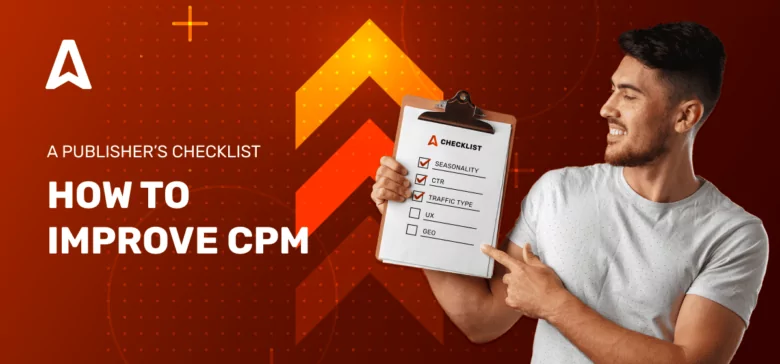Low CPM rates still cause big concerns to many publishers who monetize their websites through ad networks. Cost-per-mille (CPM) is closely tied to your ad revenue. In this guide, you’ll learn what causes low CPM and how to troubleshoot it using proven strategies, SEO optimization, and ad placement best practices.
What is CPM, and why does it matter for publishers?
CPM stands for “cost-per-mille” or “thousand impressions. In digital marketing, it marks how much you can earn by showing ads 1,000 times. The formula is: CPM = (total cost of a campaign / total number of impressions) * 1,000.
Site owners typically cannot disclose how advertisers estimate their impressions in real time.
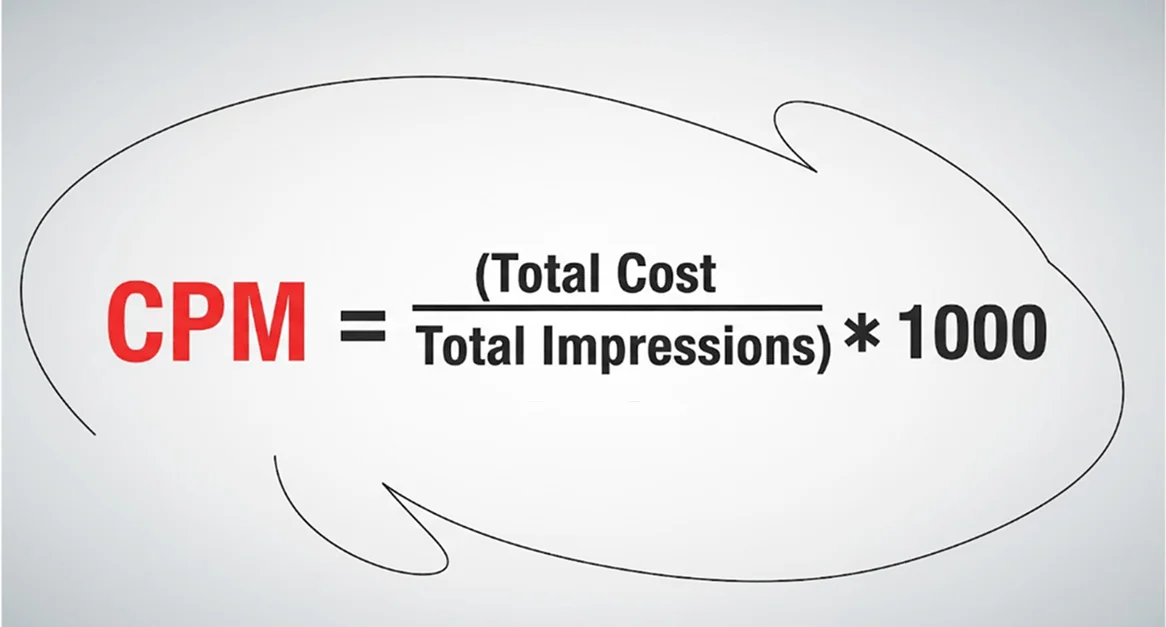
Another popular metric is eCPM, or “effective cost-per-mille”. It includes CPM revenues from ad impressions, conversions, and clicks (if the ad type requires clicks). In many advertising networks, it’s eCPM metric exactly that you see in your account.
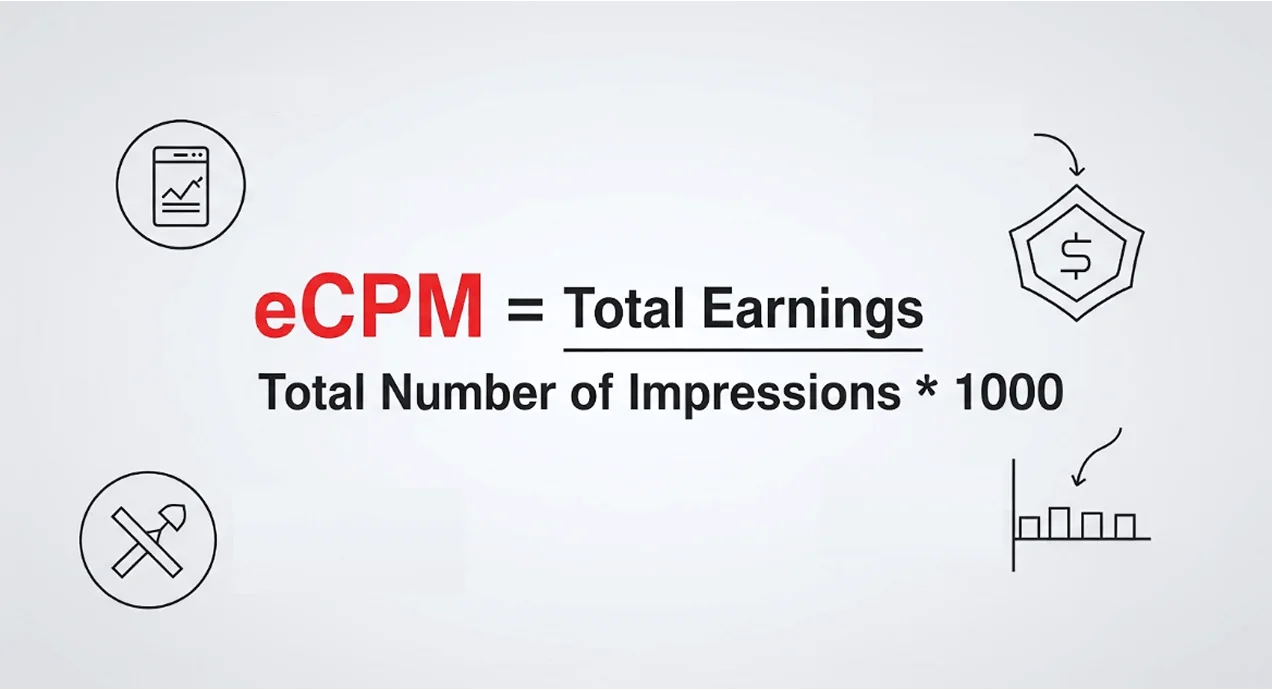
How to calculate daily or average CPM?
To calculate a daily or average CPM, divide your total/daily earnings by total/daily impressions and multiply this figure by 1000. So the formula will be = 1000 * earnings/impressions.
Here below is a stats report that our publishers shared. His movie site’s daily CPM hit $2 while monthly pure profit $14,000.
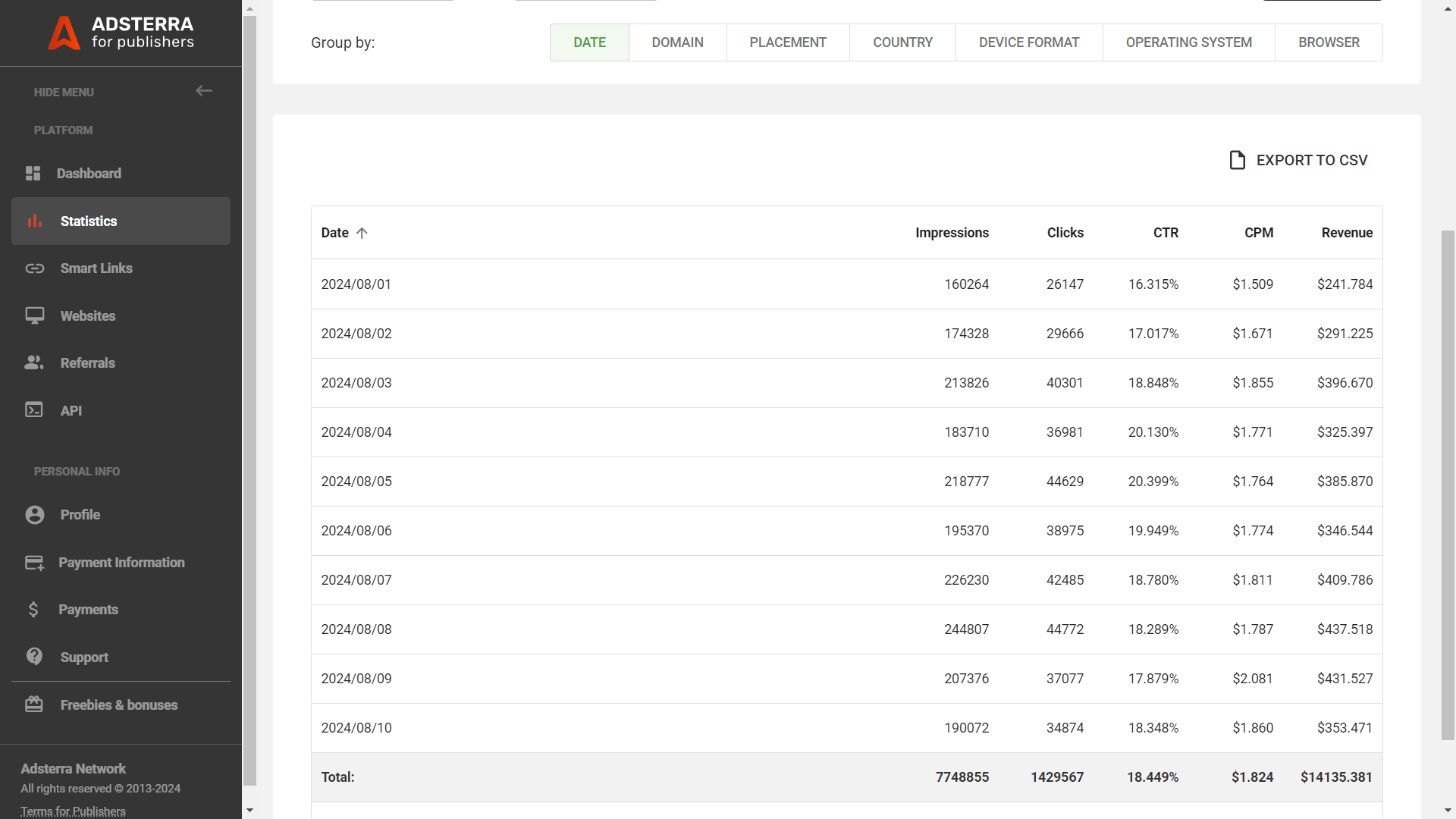
Important: if users open the web page and never scroll till they really see ads, this can’t be called a view. Save this memo on how Adsterra counts ad impressions to learn more.
Who controls CPM rates (and why CPM drops and soars)
In the ecosystem ADVERTISER ↔️ AD NETWORK ↔️ PUBLISHER, these are advertisers who determine their amount of ad spend.
Marketers may highly evaluate your ad space, and they might lose interest. Ad networks indicate those changes and update the cost per 1,000 impressions for publishers.
Publishers know that their rates can change even within one day. So, what impacts the core metric, and why do some publishers get “low CPM”? Carry on reading!
7 reasons for low CPM
Marketers bid higher (aka pay more) for specific demographics and relevant audiences. But these are not all the factors that can affect CPM rates. We will now list the most important reasons for the CPM increase or decrease. The list will help you create advertiser-friendly content, manage audience demographics, and enjoy high demand from marketers.
There are many more factors that affect publishers’ rates, but we put a focus on critical ones.
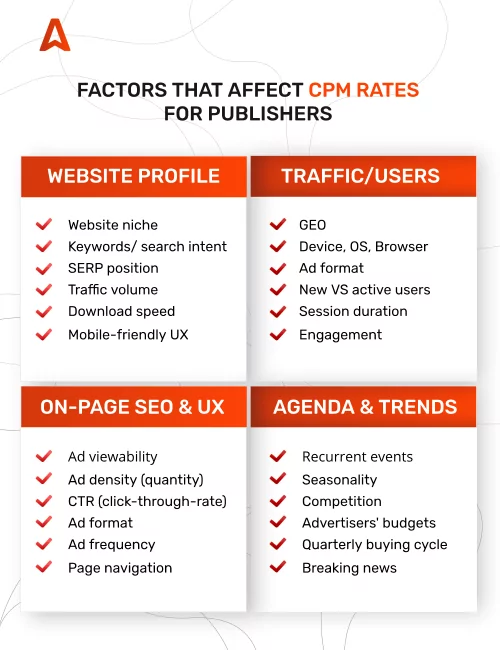
1. Your website has low user engagement
In the online industry, user engagement means how well your site can convert visitors into customers. The metric is connected with conversion rates (exact user actions such as purchases or signups). User engagement includes time spent on a page, reading depth, clicks, video views, and ad views.
EXAMPLE
When your site attracts a loyal audience who reads content, visits several pages, and doesn’t close the browser tab until they see ads, you normally get a higher CPM. Marketers always need more traffic that interacts with their offers.
RESULT
Even massive traffic won’t return good CPM if users don’t stay on a page and leave before ads are loaded. However, there’s a silver lining: the more traffic you drive, the more ad revenue you have, even with smaller rates 😉 That’s how display advertising works.
2. You send traffic that doesn’t convert
Conversion rates are something marketers value the most. Yes, we said that advertisers pay for 1,000 impressions. But when you send users who perform valuable actions, they increase payouts!
EXAMPLE
100,000 visitors of your blog have seen an ad offer today, and your CPM is $0.7, which results in $70 of ad revenue. 2 users have made a $100 purchase each after watching ads. Marketers’ bids are $10 per conversion. It means you made $20 from 2 users and $70 from 100K views!
RESULT
Partnering with advertising platforms that include payouts for conversions is a big advantage. Adsterra is one of such platforms that includes CPA (cost-per-action) campaigns in your effective CPM (eCPM) rates.
3. The geo or season is off
Marketers know exactly when and where their target audience is active. Seasonality affects travel, retail, sports, and many other verticals.
EXAMPLE
Supposing your traffic comes from Indonesia only. During the peak season and significant events like Singles’ Day or Lazada Birthday, you can enjoy highly paying e-commerce advertisers.
RESULT
For websites or blogs, CPM might spike when advertisers are interested in promoting seasonal sales or want to break into a new market (your geo) with a freemium version of some new software.
4. Low competition for your audience’s demographics
Did you know that advertisers’ payouts for South African traffic can reach $15 – $40 (CPA, depending on the season? Well, trends are your friends. These are not only US and EU users that brands target these days. Advertisers are constantly testing their strategies. They might start with the highest bids and afterward lower them, as there is no competition for these target audiences.
EXAMPLE
The competition for iGaming placements has grown in Nigeria, the Philippines, and Japan, for instance. If you drive quality ad views from these geos, owning, say, a sports blog, your chances for high CPM are impressive.
RESULT
If you send traffic that most advertisers are willing to pay for, your CPM can boost overnight!
5. Your traffic doesn’t fit the targeting
HOW IT WORKS
Targeting is everything. Advertisers don’t usually buy all views; they choose between desktop vs. mobile users, iOS vs. Android, as well as browsers, IP ranges, and even keywords.
WHY IT MATTERS FOR PUBLISHERS
Your CPM moves up when your traffic matches the advertisers’ target. And again, trends play a role: before 2020, mobile traffic was cheaper than desktop, now the situation is the opposite.
6. Marketers remember your past performance
HOW IT WORKS
Advertisers who run campaigns for a while learn to detect poor and golden traffic sources. They use unique lists to exclude placement IDs they find misfitting.
WHY IT MATTERS FOR PUBLISHERS
When you grow quality organic traffic and place ads on viewable spots, you increase your chances of being safelisted. Advertisers will place a higher CPM rate near your ID.
Note! If a website has been marked as “bad” for one campaign (e.g., E-commerce), it can recover during a Sweepstakes or mVAS campaigns.
7. Traffic volume is too low
It’s not by mistake that we put this factor last. At Adsterra, we don’t set the minimum traffic limit; we care about its quality. In the meantime, it’s evident that the more views you send, the higher payouts you receive.
1. Tech fixes for low CPM issues
It’s about time to raise the chances of making more money. You will get surefire tips for traffic quality improvements that can result in a high cpm revenue. But before we start, let’s exclude some major technical troubles that can make your CPM drop. These are pretty corny things, but they save you money 🙂
1. Correctly place ads on your website
- Place the code as recommended by your ad network. On your Adsterra account, you see the instructions right near the script itself. For example, you can’t add Popunder anywhere except the HTML page’s ‘<HEAD>’ part. And Social Bar scripts can be added to the ‘<BODY>’ part.
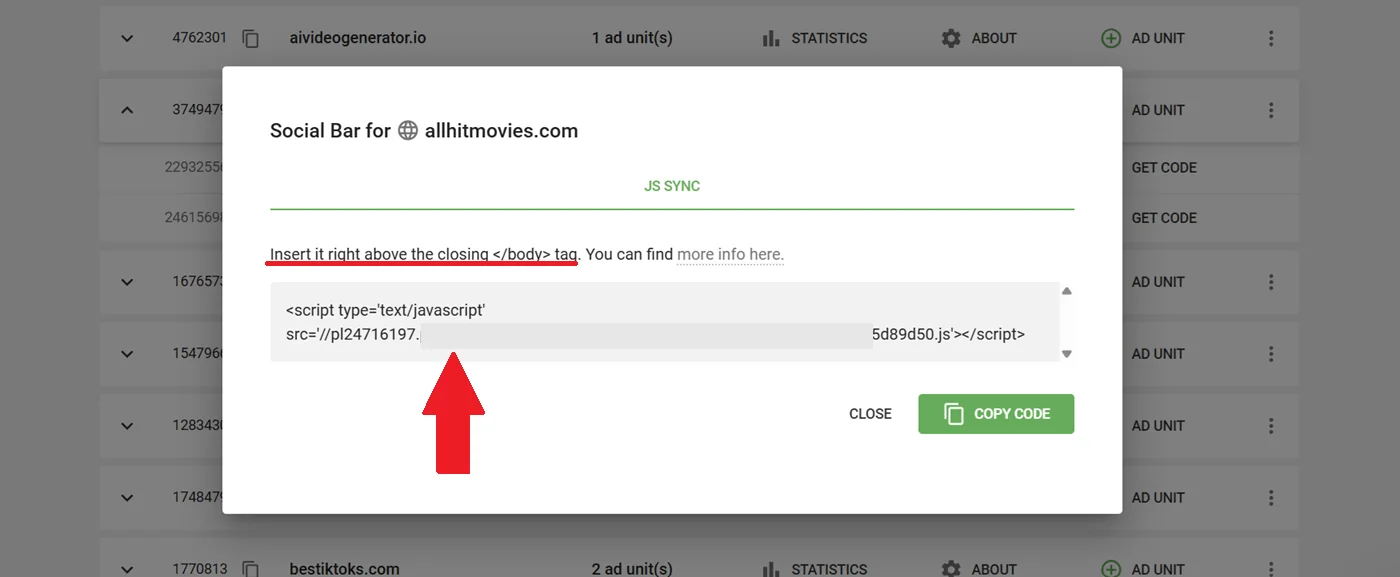
- Copy-paste ad scripts. Manual entry can provoke typos or other sad pitfalls.
- Generate a new code after switching from HTTP to HTTPS.
- Update all ad scripts after you turn on the Adsterra Anti-AdBlock feature, which can increase your revenues up to 35%, by the way.
- To place one ad type twice, get two unique scripts; otherwise, your statistics will be incorrect.
- Check your platform specifications. Plugins like WP Minify for WordPress may add additional data to the ad script.
- If you’re using Cloudflare, check whether its RocketLoader feature has NOT changed the ad script. Open the HTML view and look for the “data-rocketsrc=’//” piece of code. If you find it, it means that RocketLoader is affecting your ad impressions. To prevent adding extra text to Adsterra scripts, add ‘data-cfasync=”false”‘ attribute. Here is an example:
<script data-cfasync="false" type='text/javascript' src='//pl123456.puhtml.com/82/6d/f3/826df33e1880e1ab086c8406879dc14e.js'></script>There is a better way – ask your manager to send you new ad scripts with all attributes added.
2. Checklist to improve CPM
2.1. Drive more organic, SEO-friendly traffic
It’s the most challenging part because if you’ve just started, you can’t boast of having loads of views from Google. Avoid buying cheap or bot traffic by all means, as it may result in your account suspension.
How to get higher CPM rates with organic ad views:
- Target for low-competition, high-volume keywords.
- Use Semrush or Ahrefs to find out long-tail queries for your topic.
- Manually or via parsers, check the People Also Ask section on Google and add answers to the most frequent questions.
- Paste your copy to ChatGPT or Perplexity and ask to improve for AI-search requirements.
- Avoid buying cheap traffic as it is of poor quality; advertisers pick low CPM rates for it.
- Carry out a complete website audit and fill the gaps in optimization.
2.2. Improve user engagement metrics
Advertisers pay attention to views, clicks, and conversions. Ad quality for publishers means all placements are visible, and users can easily engage with them.
How to improve user engagement for better rates?
- Check on-page statistics: average time on page, average session duration, bounce rate, and most visited pages.
- High bounces (over 70%) mean users come and leave almost immediately without reading your content or watching ads.
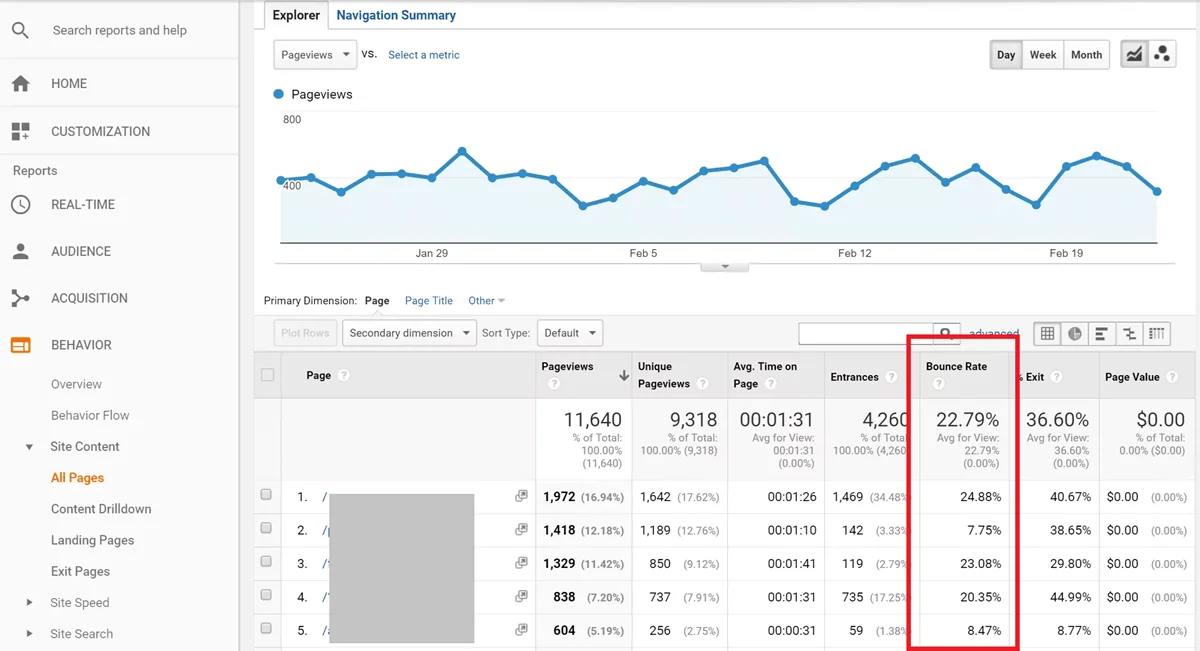
- Low session duration (less than 60 seconds) means that users don’t have enough time to interact with ads. For some websites, like URL shorteners, it’s OK, however.
- Create a list of the most quality pages and combine ad formats on them.
When you check engagement metrics, you see which pages are most liked, where to put ads to maximize views, what type of content people value the most, etc.
2.3. Get visits from both search and social
Today, you earn more if you send ad networks quality iOS and Android views. If you appear in Google and YouTube search results, this can enhance your rates. The same is fair for Facebook traffic.
On Google Analytics, you can check how many users come from mobile devices and ensure your website runs smoothly and fast on each OS. Adsterra’s stats provide data on how much you earn from mobile users.

2.4. Focus on countries with high CPM rates
Your account information includes the Statistics page, where you filter GEOs by CPM rates. With insights from Adsterra stats, you then dive into GA4 reports. Google shows which user locations dominate in your feed. In the future, you will be able to put more SEO efforts into driving traffic from the countries needed.
2.5. Ask for ad frequency optimization
Never hesitate to ask your manager to optimize your ad frequency. They can set a custom cap between ad views, tweak the frequency of ads globally or within a session.
Remember that higher ad frequency can lead to low CPM, but you will be getting bigger payouts for a while. Read more about this tweak in our expert guide to CPM rates for publishers, where we observe how to calculate CPM.
2.6. Choose the high-performing ad formats
Many publishers miss the opportunity to monetize websites only because they don’t want to try all available ad formats or pick a “misfit.” Banners are still ok, but many users skip them due to ad fatigue.
You can monetize your ad inventory with innovative Social Bar, In-Page Push, and Interstitials by using just one script. Advertisers are in love with Social Bar formats as they fit any screen and generate multiple clicks.
2.7. Ensure people can truly see ads
All ad placements must be visible. Place Banners or Native Ads above the fold: header part, hero section, or upper sidebar. The faster readers can reach the placement, the better. However, avoid spoiling user experience or content readability with tons of banners in the header.
The best option to improve ad viewability and increase CPM is to combine ads with different behavior. For example, Popunders appear in a new browser window rather than occupying space on the page.
Viewability also depends on your website type. If you run a GIF Optimizer or PDF Converter service, almost any placement will be viewable as users are all-focused on getting their task done.
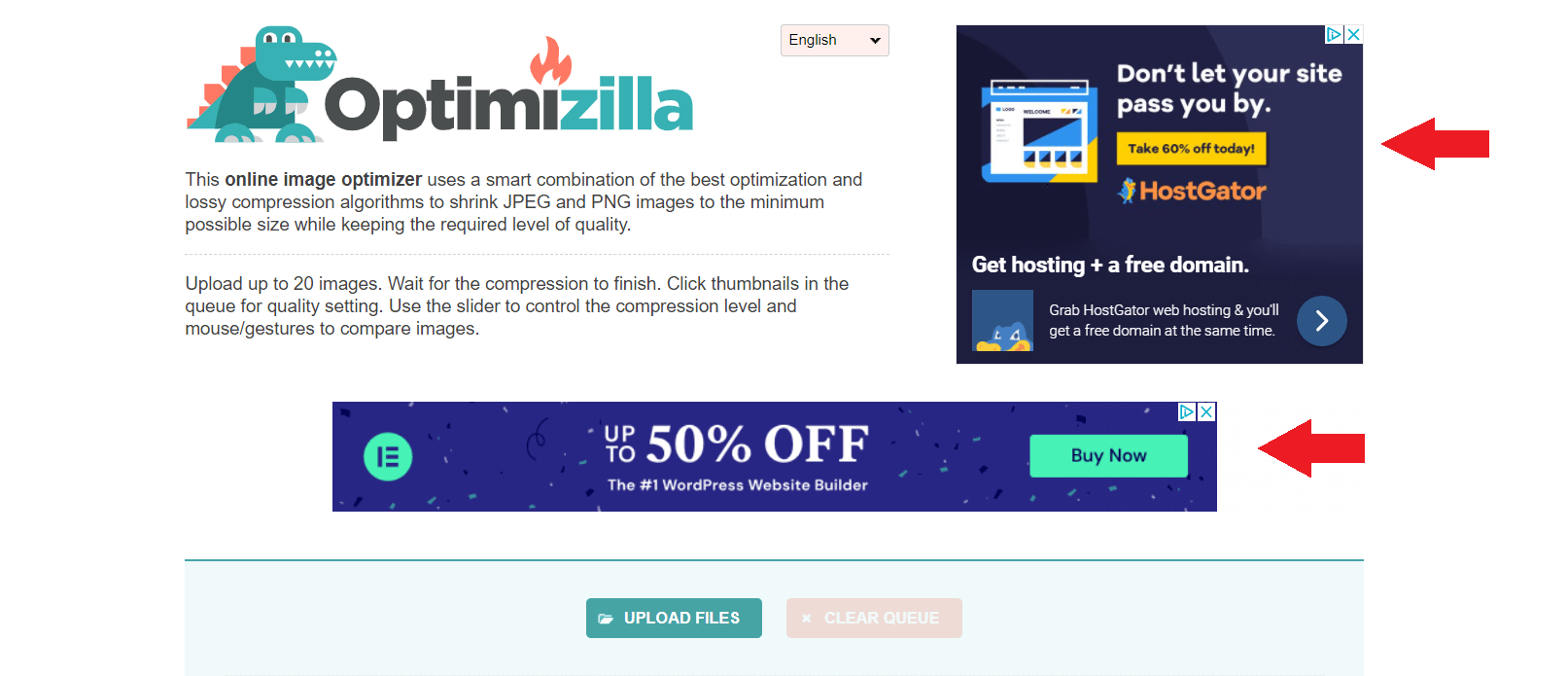
2.8. Attract new users, not only returning ones
Aim to attract more new users. If your website visitors are at 80 percent or more loyal audience, they will soon get used to seeing ads. It is unlikely that one user will react to similar ads several times, so when advertisers squeeze maximum from the traffic, they seek a new audience.
It’s great when your website sends new traffic that can interact with ads over and over again.

2.9. Avoid buying cheap or bot traffic
Advertisers will pay only for quality audiences, and fake traffic can ruin all monetization models, from brand partnerships to affiliate links. Remember high bounce rates? They come with poor traffic; users never stay on your website longer than 1-2 seconds.
Be careful with:
- Proxy traffic (it’s ghost traffic for advertisers because of the hidden IPs and false geos).
- Bulk traffic acquisition, as its quality may damage your core metrics (engagement, page views) and dramatically affect the cost for a thousand impressions.
- Unreliable link exchanges can bring you low-quality referral traffic or even bot traffic.
Recap. Focus on other metrics, not only CPM
Many factors contribute to low CPM trouble, as well as many of them help you get rich. Use all the above-listed tips as opportunities to grow your income. How to use them?
- To begin with, exclude the most obvious reasons like technical issues and those mistakes with ad placements.
- Focus on driving stable and relevant traffic.
- Check your website’s health indicators, like page speed and mobility.
- Rely on all data, not just CPM metrics. Nothing should convince you more than your revenue figures. You can always assess how much you earned in your Stats Dashboard.
Adsterra has always been among the best CPM networks. We are known for our partner care approach; your dedicated manager is always by your side to help with settings, advise on strategy, and provide guides and manuals.
Common low CPM concerns and FAQs
How do I fix low CPM rates on my website?
Ensure you place ad scripts properly, check if ads are visible to users, scale revenues with alternative ad formats as Social Bar, and try combining advertising codes with different user engagement patterns: Popunder + In-Page Push or Native Banners + Smartlink (also called Direct Link).
Why is my AdSense CPM so low?
Your AdSense CPM can be low because of low demand for your traffic: the demographics, niche, and type of users you attract (mobile users are paid more). If you previously relied on high CTRs, you may see a decrease in rates since AdSense moved from CPC to CPM payments. But normally, the latter factor doesn’t affect your overall revenues. Try alternatives to Google AdSense and test how your profits will change.
What’s a good CPM rate in 2025?
Publishers get up to $50-70 CPMs when their advertising network includes conversions in performance metrics. The pure cost-per-mille varies from $0.1 to $10-15, depending on the country. Even $0.6 is a good CPM if you can drive millions of views daily.
Does traffic location affect CPM?
Yes, a country or state that gets visitors to your site matters. Marketers set higher bids (payouts) for Tier 1 (stable economies) countries. However, if you can deliver users who will click and convert, any geo can generate profits. Trending and profitable locations are Brazil, Nigeria, Kenya, Vietnam, Indonesia, Japan, and more.
Can I increase CPM without increasing traffic?
Use these techniques to enhance CPM without boosting page visits: combine 2 or more ad formats, get views from high-CPM countries, find more viewable placements, and optimize ad frequency.
